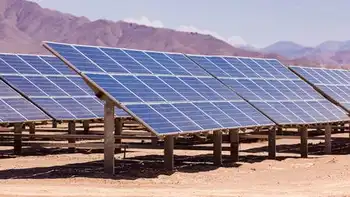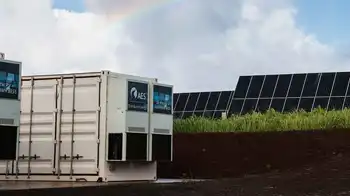General Motors to add 3,000 jobs focused on electric vehicles

CSA Z463 Electrical Maintenance
Our customized live online or in‑person group training can be delivered to your staff at your location.

- Live Online
- 6 hours Instructor-led
- Group Training Available
General Motors EV Hiring expands software development, engineering, and IT roles for electric vehicles, Ultium batteries, and autonomous tech, offering remote jobs, boosting diversity and inclusion, and accelerating zero-emission mobility and customer experience initiatives.
Key Points
GM plan to hire 3,000 software, engineering, and IT staff to speed EV programs, remote work, and customer experience.
✅ 3,000 hires in software, engineering, IT
✅ Focus on EVs, Ultium batteries, autonomous tech
✅ Remote roles, diversity, inclusion priorities
General electrical safety involves practices and procedures designed to prevent electric shock, arc flash, and other hazards associated with electrical systems. Whether at home, in the workplace, or industrial environments, following established safety guidelines helps protect people, property, and equipment from electrical accidents. General Motors plans to hire 3,000 new employees largely focused on software development as the company accelerates its plans for electric vehicles, the automaker announced Monday.
GM said the jobs will be focused on engineering, design and information technology “to increase diversity and inclusion and contribute to GM’s EV and customer experience priorities.” The hiring is expected through the first quarter of 2021, as the company addresses EV adoption challenges in key markets. Many of the positions will be remote as GM begins to offer “more remote opportunities than ever before,” the company said.
“As we evolve and grow our software expertise and services, it’s important that we continue to recruit and add diverse talent,” GM President Mark Reuss said in a release. “This will clearly show that we’re committed to further developing the software we need to lead in EVs, enhance the customer experience and become a software expertise-driven workforce.”
General Motors CEO on third-quarter earnings, rise in demand for trucks and more
The hiring blitz comes as the automaker expects to increase focus on electric vehicles, including offering at least 20 new electric vehicles globally by 2023, while competitors like Ford accelerate EV investment as well. GM earlier this year said it planned to invest $20 billion in electric and autonomous vehicles by 2025, including a tentative Ontario EV plant commitment.
Ken Morris, GM vice president of autonomous and electric vehicles programs, told reporters on a call Monday that the automaker has pulled forward at least two upcoming electric vehicles following the GMC Hummer EV, which is the first vehicle on GM’s next-generation electric vehicle platform with its proprietary Ultium battery cells.
“We’re moving as fast as we can in terms of developing vehicles virtually, more so than we ever have by far,” Morris said. “We are doing things virtually, more effective than we ever have.”
Shares of the automaker reached a new 52-week high of $39.72 ahead of the Monday announcement. The stock was up 5% during midday trading Monday following market optimism about a Covid-19 vaccine and President-elect Joe Biden outlining priorities that would support electric vehicles nationwide.
The race between Tesla, GM, Rivian and others to dominate electric pickup trucks
“We’re looking forward to working with the Biden administration and support policies that will foster greater adoption of EVs across all 50 states and encourage investments in R&D and manufacturing,” Morris said. “At the end of the day, climate change is a global concern and the best way to remove automobile emissions from the environmental equation is all-electric, zero-emissions future.”
At the same time, gas-electric hybrids continue to gain momentum in the U.S., shaping consumer transition paths.
The additional jobs are separate from a previous announcement by GM to hire 1,100 new employees as part of a $2.3 billion joint venture with LG Chem to produce Ultium cells in northeast Ohio.
GM employed about 164,000 people globally in 2019, down from 215,000 in 2015 as the company has restructured and cut operations in recent years.











